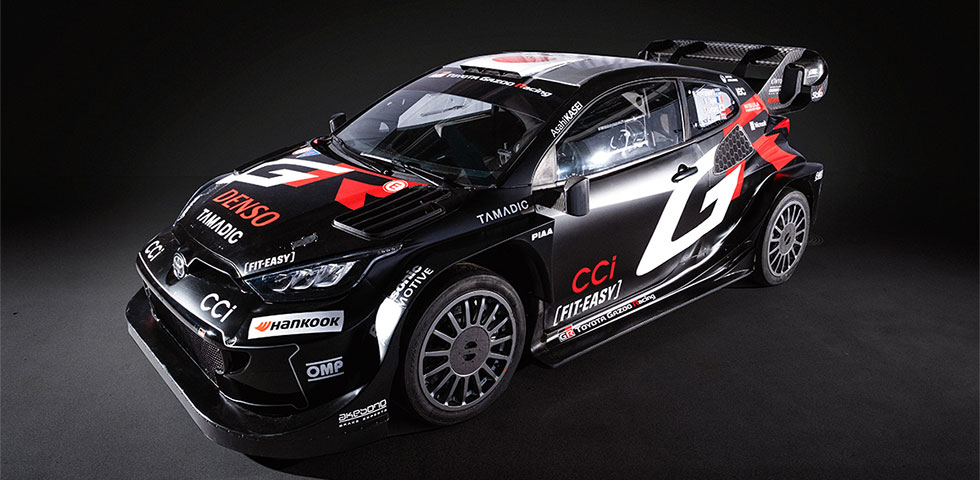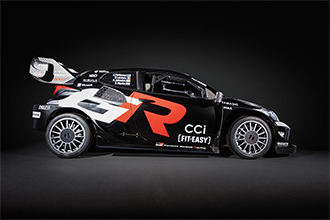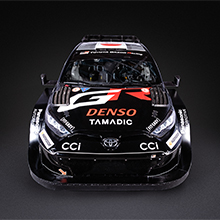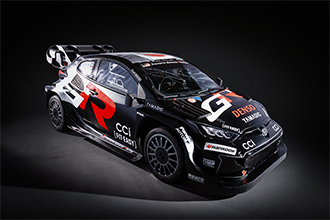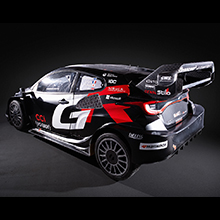The ultimate rally car?
Posted on February 07, 2025
The GR YARIS Rally1:
The Toyota GR YARIS Rally1 is an improved and evolved model of the ultimate rally car developed in accordance with the FIA Rally1 technical regulations for 2022. Rally1 cars are new regulation vehicles that replace World Rally Cars, which were the highest level until 2021. The first generation of Rally1 cars were the first highest-level rally cars to be equipped with hybrid units. Three seasons later, in 2025, the introduction of new regulations resulted in hybrid units being removed, but 100 percent sustainable fossil-free fuel continues to be used as a technology to promote sustainable motorsports.
The GR YARIS Rally1 chassis still features a spaceframe design, and the safety protection for the driver and co-driver remains at a very high level. Parts that enhance the driving stability of the car, such as side skirts and large rear wings, have also been carried over. The transmission is a four-wheel drive system with mechanical differentials at the front and rear. The simple structure based on Rally1 regulations, including the five-speed gearbox with a mechanical shift and short suspension travel, remain the same as they were up to 2024.
The power unit of the GR YARIS Rally1 remains essentially unchanged from the 2024 vehicle, featuring a 1.6-liter inline 4-cylinder direct-injection turbocharged engine. However, due to the change in regulations, the diameter of the intake air restrictor has been reduced from 36 mm up to the 2024 season to 35 mm, and since the hybrid unit has been removed, the maximum output has been reduced from over 500 PS to over 370 PS. With the boost provided by the hybrid unit no longer available, the characteristics required of the engine have also changed, resulting in changes to the exhaust system and camshafts in the 2025 model. The gear ratio was also reviewed among other measures to optimize the vehicle. At the same time, the minimum weight of the vehicle was greatly reduced due to the removal of the hybrid unit, resulting in an 80 kg weight reduction from the previous vehicle to 1180 kg. The GR YARIS Rally1 has evolved into a rally car with even more agile driving performance than before.
Developed based on the GR YARIS, using lessons from the YARIS WRC and GR YARIS Rally1 HYBRID
he GR YARIS Rally1 is based on the road-going GR YARIS production model, which itself was developed using the experience gained in five seasons of competition with the Yaris WRC and three seasons with the GR YARIS Rally1 HYBRID. Making its debut on the stages in 2017, the Yaris WRC was the first car Toyota had built for rallying’s highest level for two decades. It achieved victory in just its second event on Rally Sweden, but the demanding roads of the WRC still provided the team’s drivers and engineers with some harsh lessons in the early days. Over five seasons up to 2021, the Yaris WRC’s engine, aerodynamics, suspension, drivetrain and other components underwent numerous updates and performance and reliability gradually improved each season. In 2018, it won the manufacturers’ championship, before claiming successive drivers’ and co-drivers’ titles in both 2019 and 2020. In its final season in 2021, the Yaris WRC took a clean sweep of the available titles and won nine of the 12 rallies. The team’s engineers put the lessons they learned with the Yaris WRC into the GR YARIS Rally1 HYBRID, and in 2022 they released it as a rally car to compete in the new era of sustainable WRC. The GR YARIS Rally1 HYBRID demonstrated its strength from the first year of its release in 2022. By 2024, it had led the team to three consecutive manufacturers’ championships, and Kalle Rovanperä to two drivers’ championships. In 2025, TGR-WRT will take on the challenge of earning even more victories and glory with the GR YARIS Rally1.
Tires for all road surfaces
The size of tires and rims differ between gravel/snow and tarmac. Gravel and snow tires are 15 inches, while tarmac tires are 18 inches. Snow tires for snowy roads have metal studs (spikes) embedded in them, which provide high grip performance even on slippery surfaces. The number of tires that can be used in a single race is regulated, so choosing which tires to use and when to change them is an important strategy. From 2025, the tire supplier has changed from Pirelli to Hankook, so teams and drivers will need to quickly understand the characteristics of the tires and optimize both car settings and driving.
Specifications and equipment differ depending on the specific competition or special stage
Vehicle specifications and settings change for every competition. Depending on whether the rally is held on gravel, snow, or tarmac, not only the tires but also parts such as the brakes and suspension need to be changed. For rallies held on smooth tarmac, the vehicle height should be kept to a minimum, however on rough gravel rally roads, the car should be higher to avoid contact with the road surface. Also, to accommodate changing road conditions including rain, settings such as the suspension and power train are adjusted as needed. For night driving, visibility is enhanced by installing an auxiliary light source on the hood called a light pod.
Work at the service park is a battle against time
While circuit races have pit stops, at rallies servicing and repairs are performed at the service park. Once the competition begins, the time allotted for servicing is limited to just 15 minutes in the morning prior to the race, 30 minutes during the day, and 45 minutes at night. Once a vehicle has been serviced at night, it is parked in a garage called the "Parc Fermé," where no further servicing is permitted until the next morning.
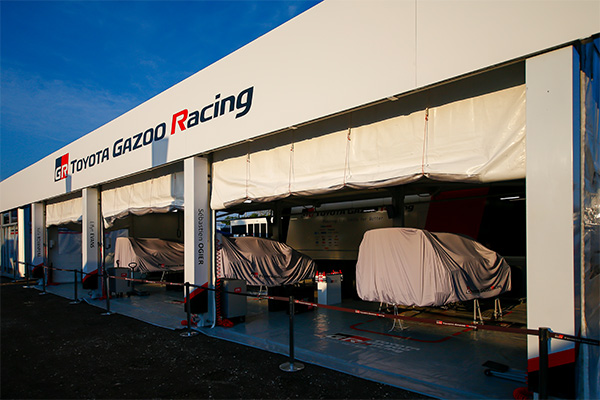
VEHICLE SPECS
| Engine | |
|---|---|
| Engine type | In-line 4-cylinder turbo, direct injection |
| Engine displacement | 1,600 cc |
| Maximum power | Over 370 PS |
| Maximum torque | Over 425 Nm |
| Bore / stroke | 83.8 mm / 72.5 mm |
| Air restrictor | 35 mm, following FIA regulations |
| Transmission | |
| Gearbox | 5 speed mechanical shift |
| Gearbox final drive | 4 wheel drive, 2 x mechanical differentials |
| Clutch | Double Plate Sintered Clutch |
| Chassis / suspension | |
| Front / rear | Macpherson |
| Suspension travel | Damper travel 270mm |
| Steering | Hydraulic Rack and Pinion |
| Braking system | Gravel 300 mm, Tarmac 370 mm |
| Dimension and weight | |
| Length / width / height | 4,225 mm (incl. aero device) / 1,875 mm / adjustable |
| Track width | Adjustable |
| Wheelbase | 2,630 mm |
| Minimum weight | 1,180 kg |
| Performance | |
| Top speed | 201 kph (Ratio Specific) |
